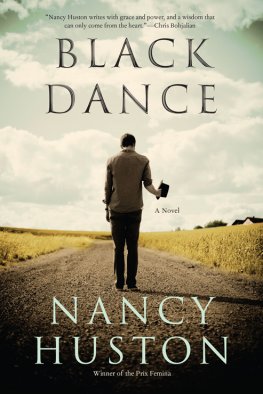Milos Pavlovic - The Modernized Colle-Zukertort Attack
Here you can read online Milos Pavlovic - The Modernized Colle-Zukertort Attack full text of the book (entire story) in english for free. Download pdf and epub, get meaning, cover and reviews about this ebook. genre: Home and family. Description of the work, (preface) as well as reviews are available. Best literature library LitArk.com created for fans of good reading and offers a wide selection of genres:
Romance novel
Science fiction
Adventure
Detective
Science
History
Home and family
Prose
Art
Politics
Computer
Non-fiction
Religion
Business
Children
Humor
Choose a favorite category and find really read worthwhile books. Enjoy immersion in the world of imagination, feel the emotions of the characters or learn something new for yourself, make an fascinating discovery.

- Book:The Modernized Colle-Zukertort Attack
- Author:
- Genre:
- Rating:4 / 5
- Favourites:Add to favourites
- Your mark:
- 80
- 1
- 2
- 3
- 4
- 5
The Modernized Colle-Zukertort Attack: summary, description and annotation
We offer to read an annotation, description, summary or preface (depends on what the author of the book "The Modernized Colle-Zukertort Attack" wrote himself). If you haven't found the necessary information about the book — write in the comments, we will try to find it.
The Modernized Colle-Zukertort Attack — read online for free the complete book (whole text) full work
Below is the text of the book, divided by pages. System saving the place of the last page read, allows you to conveniently read the book "The Modernized Colle-Zukertort Attack" online for free, without having to search again every time where you left off. Put a bookmark, and you can go to the page where you finished reading at any time.
Font size:
Interval:
Bookmark:
[Event ?] [Site ?] [Date ????.??.??] [Round ?] [White Introduction] [Black Preface] [Result *] { @@HeaderStart@@Preface@@HeaderEnd@@ Edgard Colle and Johannes Zukertort were both masters and played from late 19th century to the beginning of the next. Though they are rarely mentioned as prominent players of that era, an entire opening carries their name, which is not something that many players can say. Colle certainly contributed enormously in implementing key ideas in this opening. Zukertort lost to Steinitz in the 1872 World Championship Match, and was very strong in the 1870s and 1880s. He often experimented with b3 ideas in various positions. I would like to clarify that systems presented in this book that start with b3 we call Zukertort, while ideas connected with c3 we call Colle systems.
Both systems are analysed in this book in detail. They often transpose into one another in terms of ideas. Moreover, both the Colle and Zukertort can be used against many setups. I have tried to do exactly that: find rare lines that can be deployed against many regular openings. These, of course, have been modernised and tailored to create unique and strong strategical play. Indeed, this book is a modern twist on some old ideas.
While reading some material on the topic, I noticed that this opening is simply out of fashion. Therefore no new games are being played, apart from a couple of Kramnik games which are obviously not enough to reach clear conclusions, let alone build an opening for your own application. I have decided to give it a fresh new look. Not only that, but after some thorough analysis, I also implemented it into my own tournament practice. The Colle-Zukertort is a deep independent opening in its own right, but is also very flexible. Transpositions to the Queens Indian or Slav are often possible.
The simplicity of placing the bishop on d3, a knight on e5 and following up with f4 and Rf3 with checkmating prospects is very tempting. Underneath it all though, it is way more than that simplified idea. It is filled with rich positional possibilities and nuances that one should be aware of. I have tried to show as many aspects as possible, pointing out exactly the relevant details and knowledge that are normally only accessible to strong positional players, such as Kramnik. This opening is for fans of classical chess. I wanted to present chess in the old style, before players had access to engines to help them with their play and understanding.
Before engines, players such as Colle and Zukertort created and innovated to such an extent that we still use their ideas today. I wanted to use this approach, to remind readers that this style of chess still exists. Other systems are also covered in this book besides the usual 1.d4 d5 2.Nf3 Nf6 3.e3, which can also be reached through the move order 1.d4 Nf6 2.Nf3 d5 3.e3, obviously. I have tried to give some interesting and rare positional lines as possible reactions to some logical Black responses, such as setups with c5 or g6. Milos Pavlovic, Belgrade 2019 } 1. * [Event ?] [Site ?] [Date ????.??.??] [Round ?] [White Introduction] [Black Chessable Introduction] [Result *] { @@HeaderStart@@Welcome To The Modernized Colle-Zukertort!@@HeaderEnd@@ What you have before you is GM Milos Pavlovics attempt to create a single-volume 1.d4 repertoire for fighters.
Maybe you are already familiar with the games of Edgar Colle, Johannes Zukertort, and Artur Yusupov, showcasing the devastating attacking potential of the bishops on d3 and b2. But dont mistake the Colle-Zukertort for a primitive, one-dimensional system. Positional and strategic themes abound in the Colle-Zukertort. You will learn how to shatter central structures with a timely dxc5 and e4-break; create pawn weaknesses in the opposing camp, such as isolated a-and c-pawns; play against certain pieces and more. All the while, the prospect of a kingside attack looms large. GM Pavlovics work spans 470+ variations.
The course might seem heavy until you realize it covers just about everything Black can throw at you: from d5 ande6 structures; kingside and queenside fianchettos; to Dutch formations. You will also find that the lines offer plenty of opportunities to favorably transpose into other openings like KID, Benoni, and even the Ruy Lopez. Creating such a repertoire meant GM Pavlovic had to do a few things differently from other opening books: @@StartBlockQuote@@He gives plenty of equally good major alternatives instead of sticking to a main line.@@EndBlockQuote@@You might feel tempted to pick one that suits your playing style, a perfectly fine decision. However, the author recommends studying all of the major branches to get a deeper understanding of the common structures and plans in the system. If you wish to follow the authors recommendation, consider toggling the hints on so that you know which line you are training. Weve added plenty of soft-fail moves to cover all of the alternatives.
But if we missed a few (or many :o) , please let us know via the comments. @@StartBlockQuote@@Many of the lines end with tense and rich positions.@@EndBlockQuote@@GM Pavlovic did an accurate job in evaluating the ending positions, most of which are dynamically balanced or slightly advantageous for White. To help you navigate these interesting positions, we added colored arrows and circles to indicate plans and ideas to consider. Heres a quick rundown of what the visual cues means: Blue arrows and circles: Piece paths, development schemes, and positional trumps Green arrows and circles: Alternative ways to play Red arrows and circles: Opponents threats, targets, must-nots These visual cues dont show during review so as not to give away hints. So be sure to revisit the read-only version of the trainable lines often to view the markers and refresh your memory. * [Event ?] [Site ?] [Date ????.??.??] [Round ?] [White Quickstarter Guide] [Black Quickstarter 1 5c4] [Result *] 1. d4 Nf6 2. Nf3 d5 3. e3 e6 4. e3 e6 4.
Bd3 { An important thing to say is that this book is about deeply understanding classical chess based on a modern outlook rather then looking for direct attempts for an advantage using in-depth engine analysis.Learning chess classically is of the utmost necessity to all competitive players. The Colle and Zukertort lines are not mainstream systems in todays chess, but I think that is because they were not properly analysed. Recently, weve seen a rise of the London system, to such an extent that everybody is now playing it. I think that the lines treated in this book may also be victims to such popularity in coming years. They hold such a variety of ideas, from positional to attacking, which is rarely found in chess nowadays. } 4 c5 5.
O-O { This is essential: before deciding on c3 or b3, White must castle first. However, this gives Black the interesting possibility to close the position with c4 and force matters into a much slower type of game. } 5 c4 { An important line. Black simply wants to gain space and defend it no matter what. A perfectly legitimate idea and something that White cannot neglect. Be2 b5 7. b3 Bb7 { This is the lines starting position. } 8. a4 { White goes for solid plan. } 8 a6 9. c3 { A positional idea for White here is to exchange the darksquared bishops via a3 and to later on try and build some pressure along the a-or b-file. c3 { A positional idea for White here is to exchange the darksquared bishops via a3 and to later on try and build some pressure along the a-or b-file.
Full Theoretical Overview } * [Event ?] [Site ?] [Date ????.??.??] [Round ?] [White Quickstarter Guide] [Black Quickstarter 2 9Be7] [Result *] 1. d4 d5 2. Nf3 Nf6 3. e3 e6 4. Bd3 c5 5. c3 { We are entering the Colle system, which is defined as the c3-setup. c3 { We are entering the Colle system, which is defined as the c3-setup.
White has a few ideas here, e4 usually being the main one. This is often only achieved when White goes dxc5 and only then e4. Due to the knight being on c6, Black is forced to take with the bishop on c5. Resemblances with the Semi-Slav are obvious and we can say that White is a clear tempo up compared to Blacks perspective in the Semi-Slav, and that is often an important detail in sharp positions. } 6 Bd6 7. dxc5 Bxc5 9. b4 Be7 { A slower approach to this position but also a more solid one in a way. } 10. } 10.
Next pageFont size:
Interval:
Bookmark:
Similar books «The Modernized Colle-Zukertort Attack»
Look at similar books to The Modernized Colle-Zukertort Attack. We have selected literature similar in name and meaning in the hope of providing readers with more options to find new, interesting, not yet read works.
Discussion, reviews of the book The Modernized Colle-Zukertort Attack and just readers' own opinions. Leave your comments, write what you think about the work, its meaning or the main characters. Specify what exactly you liked and what you didn't like, and why you think so.





